As the title states, we're looking for a way to access a .NET 3.5 Web service that is behind a Windows integrated (NTLM) authentication.
We've searched the internets and this forum this entire week, and we've yet to find a solution to this problem.
We've tried, DefaultHttpConnections, different variations of HttpPost, HttpGet etc.
However we try to authenticate ourselves we run into these:
SSLHandshakeException
or
Authentication scheme ntlm not supported
Authentication error: Unable to respond to any of these challenges:
ntlm=WWW-Authenticate: NTLM, negotiate=WWW-Authenticate: Negotiate
The IIS authentication is set as follows:

The page we're trying to access is an .aspx in a subfolder to the default site, and we dont have previliges and neither is it safe to change the authentication to the default site.
I know many others out there in the internets has similar problems.
And also, the app we're developing is not supposed to use web-views.
Any constructive pointers about how to solve this will be highly appreciated. Thanks in advance.
UPDATE: We have now changed the service to perform both basic and ntlm authentication.
When we run the code below to a localhost test-server we get the proper response, the localhost does not have any sort of authentication mechanism. The response as follows:
<soap:Body>
<FooResponse xmlns="uri:FlexAPI">
<FooResult>
<typeFooBar>
<FooNumber>4545</FooNumber>
<BarNumber>1</BarNumber>
</typeFooBar>
</FooResult>
</FooResponse>
</soap:Body>
However, When we run the code below on our authenticated server we get this.
org.xmlpull.v1.XmlPullParserException: expected: START_TAG {http://schemas.xmlsoap.org/soap/envelope/}Envelope (position:START_TAG @2:44 in java.io.InputStreamReader@4054b398)
SoapObject request = new SoapObject(NAMESPACE, METHOD_NAME);
request.addProperty("Foo", Bar.getText().toString());
request.addProperty("Foo", Bar.getText().toString());
request.addProperty("Foo", Bar() );
request.addProperty("Foo", Bar.getText().toString());
SoapSerializationEnvelope envelope = new SoapSerializationEnvelope(SoapEnvelope.VER11);
envelope.dotNet = true;
envelope.setOutputSoapObject(request);
envelope.encodingStyle = "utf-8";
envelope.implicitTypes = false;
String myUrlz= "http://" + myUrl.getText().toString() +"/Foo/Bar.asmx";
HttpTransportBasicAuth auth = new HttpTransportBasicAuth(myUrlz, "Foo", "Bar");
auth.debug = true;
try
{
auth.call(SOAP_ACTION, envelope); // Fails on this line.
System.out.println("Dump" + auth.responseDump);
// all the other stuff.....
}
catch (FooException Bar)
{
// ¯\_(ツ)_/¯
}
So basically, we're recieveing html response instead of xml when accessing the protected service. And yes, the localhost service and the sharp service are exactly the same except for the authentication part.